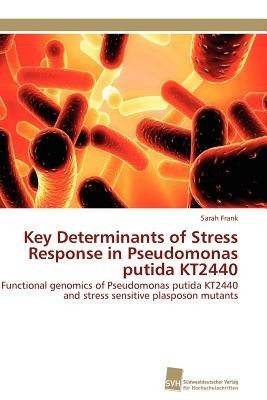
- We will send in 10–14 business days.
- Author: Frank Sarah
- Publisher: Sudwestdeutscher Verlag Fur Hochschulschriften AG
- Year: 2011
- Pages: 268
- ISBN-10: 3838125231
- ISBN-13: 9783838125237
- Format: 15.2 x 22.9 x 1.6 cm, softcover
- Language: English
- SAVE -10% with code: EXTRA
Key Determinants of Stress Response in Pseudomonas putida KT2440 (e-book) (used book) | bookbook.eu
Reviews
Description
Pseudomonas putida KT2440 is a biosafety strain, which has retained its capability to survive and function in the environment. Its broad metabolic capability to degrade a broad spectrum of aromatic compounds and still grow at temperatures as low as 5°C makes it a good candidate as a model organism to study genome wide responses to changing growth conditions which mimic environmental changes in natural habitats. In this study a functional genomics approach was used to examine the stress response of P. putida KT2440 wild type and five cold sensitive Tn5 mutants (with plasposons inserted in cbrA, cbrB, pcnB, vacB and bipA) to cold shock by decreasing the temperature from 30°C to 10°C. For this, transcriptome data derived from three different transcriptome platforms (Illumina cDNA sequencing, Affymetrix microarrays and Progenika microarrays), as well as metabolome and proteome data were combined. The wild type and a pcaI:: Tn5 mutant were furthermore exposed to high concentrations of sodium benzoate (45 mM).
EXTRA 10 % discount with code: EXTRA
The promotion ends in 20d.00:06:36
The discount code is valid when purchasing from 10 €. Discounts do not stack.
- Author: Frank Sarah
- Publisher: Sudwestdeutscher Verlag Fur Hochschulschriften AG
- Year: 2011
- Pages: 268
- ISBN-10: 3838125231
- ISBN-13: 9783838125237
- Format: 15.2 x 22.9 x 1.6 cm, softcover
- Language: English English
Pseudomonas putida KT2440 is a biosafety strain, which has retained its capability to survive and function in the environment. Its broad metabolic capability to degrade a broad spectrum of aromatic compounds and still grow at temperatures as low as 5°C makes it a good candidate as a model organism to study genome wide responses to changing growth conditions which mimic environmental changes in natural habitats. In this study a functional genomics approach was used to examine the stress response of P. putida KT2440 wild type and five cold sensitive Tn5 mutants (with plasposons inserted in cbrA, cbrB, pcnB, vacB and bipA) to cold shock by decreasing the temperature from 30°C to 10°C. For this, transcriptome data derived from three different transcriptome platforms (Illumina cDNA sequencing, Affymetrix microarrays and Progenika microarrays), as well as metabolome and proteome data were combined. The wild type and a pcaI:: Tn5 mutant were furthermore exposed to high concentrations of sodium benzoate (45 mM).


Reviews